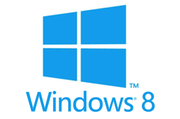 When the Windows 8 Consumer Preview is available Wednesday it should answer questions that the earlier developers preview didn't.
When the Windows 8 Consumer Preview is available Wednesday it should answer questions that the earlier developers preview didn't.
Chief among these is what applications will be available right away that are written in what Microsoft calls Metro style. Metro style refers both to the graphical look of the user interface, which relies on words rather than icons, and to the way individual applications interact with the touchscreen environment Windows 8 supports.
TEST YOURSELF: The Windows 8 Quiz
The Windows Store, which will be the marketplace for acquiring these applications, launches Wednesday, too, so users will get their answer.
Will Microsoft apps support touch mode, and if so, when?
This is important to those who want to use tablets but want more laptop functionality. Microsoft says it is preparing touch mode for the next major release of Office (Office 15) applications, some of which will ship with WOA devices. Office 15 itself is due out sometime by the end of the year, industry observers say, but Microsoft hasn't set a date.
How well will Windows 8 perform on legacy x86 hardware?
According to Microsoft, Windows 8 hardware requirements are no greater than those for Windows 7, and the company recommends that Windows 8 Consumer Preview users install the operating system on devices that are marked Windows 7 compatible. The new operating system supports all the applications Windows 7 supports on x86 PCs, Microsoft says.
That's the promise, and the preview will let consumers find out one way or the other whether that's strictly the case.
What will the Metro style multitasking interface be like?
When running Windows 8 without keyboard or mouse, users pick and choose the apps they want from a Start screen. (The desktop and Start button themselves are gone.) If they are already in an app, they can swipe from the side of the screen to view more, but if they have many applications active, it can be a chore to find the one they want -- not crippling, but more cumbersome than using a desktop or taskbar buttons.
Story Source:
Read more about software in Network World's Software section.
Note: Materials may be edited for content and length. For further information, please contact the source cited above.
No comments:
Post a Comment